Use this ten more, ten less worksheet set to engage your students while they practise computing 10 more or 10 less than a number within 120.
10 More, 10 Less Worksheet Set – Skip Counting
Why teach ’10 more, 10 less’ in your early years classroom? Skip counting is the ability to count forward by a nominated interval (think: 2s, 5s and 10s), and ’10 more, 10 less’ challenges students further. This skill requires children to be able to find the number ten more or ten less than a given two-digit number, meaning they need to recall or use a strategy to determine that number without the ‘run-up’ or ‘count down’ which they use in skip counting exercises.
The concept of “10 more” and “10 less,” relates directly to skip counting by 10s. When you want to find a number that is “10 more” than a given number, you simply add 10 to it. For example, if you start with 30 and want to find a number that is “10 more,” you would add 10 to 30, resulting in 40.
Conversely, when you want to find a number that is “10 less” than a given number, you subtract 10 from it. Continuing with the previous example, if you start with 30 and want to find a number that is “10 less,” you would subtract 10 from 30, resulting in 20.
Students will learn that to determine either 10 more or 10 less than a given number, they will leave the number in the ‘ones’ column the same, and either increase the ‘tens’ number up or down by one. For example, ten less than 53 is 43 (the 3 in the ones column remains the same, but the 5 tens reduce to 4 tens).
So, the relationship between “10 more” and “10 less” and skip counting is that adding 10 or subtracting 10 corresponds to moving forward or backward in a skip counting sequence by 10s.
This 10 more, 10 less worksheet comes in three levelled variations. Each level has a student question page, a student colouring page, an answer key for the questions, and an answer key for the colouring page.
Students will continue pattern sequences, formed by skip counting, by tens, and demonstrate an awareness of place value in two- and three-digit numbers.
Tips for Differentiation + Scaffolding
In addition to individual student work time, use this worksheet as a:
- maths rotation
- lesson exit ticket
- fast finisher activity
- homework assignment
- whole-class review (via smartboard)
For students requiring additional support, begin by assigning the 1-star page while still practising the same learning objective. Provide a hundreds chart to assist.
If students need a challenge, assign them the 3 star page, or allow them to complete multiple coloring pages. Also, students could create their own picture with questions and trade with a classmate.
Easily Download & Print
Use the dropdown icon on the Download button to choose between the PDF or Google Slides version of this resource.
Because this resource includes answer sheets, we recommend you print one copy of the entire file. Then, make photocopies of the blank worksheet for students to complete.
This resource was created by Lorin Davies, a teacher and Teach Starter Collaborator.
Don’t stop there! We’ve got more activities to shorten your lesson planning time:
Engage your students and have them practise reading statements about values 10 more or 10 less, then and determining if the statement is accurate. Practise adding and subtracting 10 from given numbers within 100 in this cut-and-paste worksheet. Use an understanding of place value to determine a number that is 10 or 100 more or less than a number with this set of peg cards.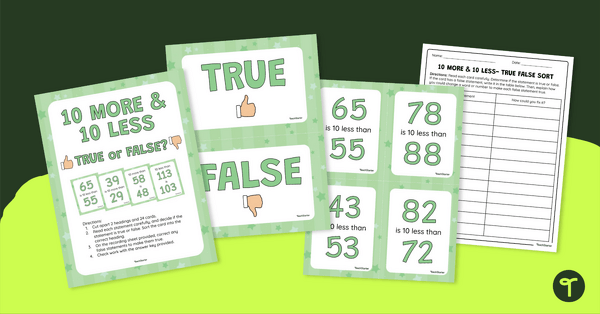
teaching resource
10 More 10 Less Sorting Card Game

teaching resource
Ten More and Ten Less - Cut and Paste Worksheet
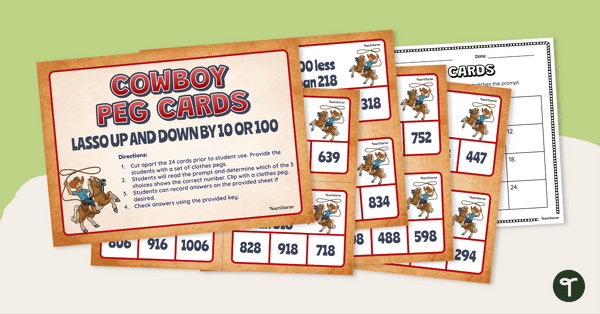
teaching resource
Cowboy Peg Cards – 10 More, 10 Less/100 More, 100 Less
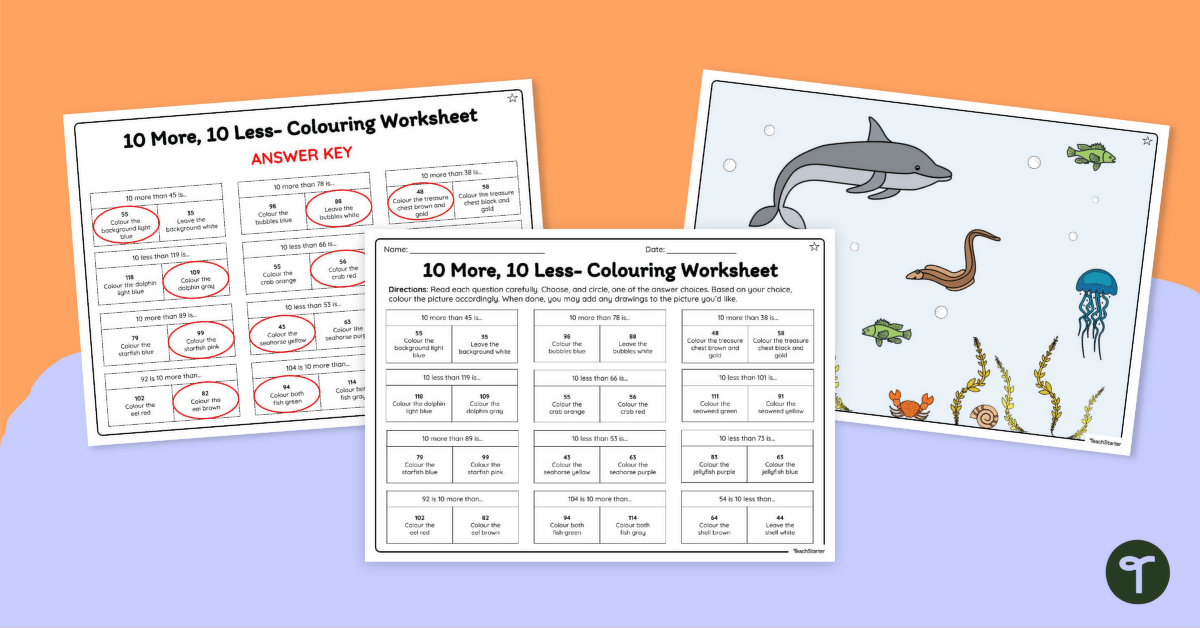

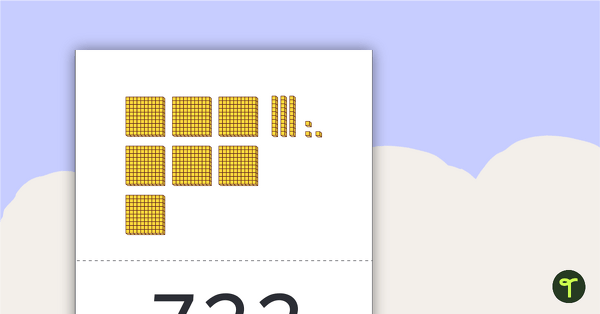
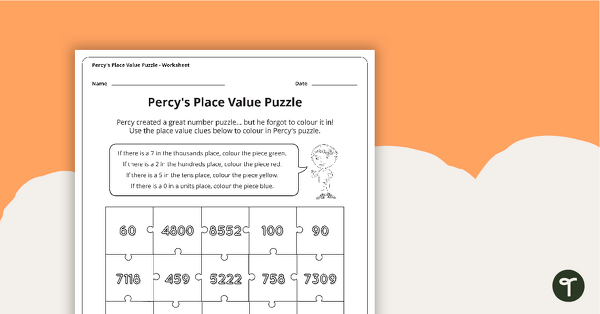
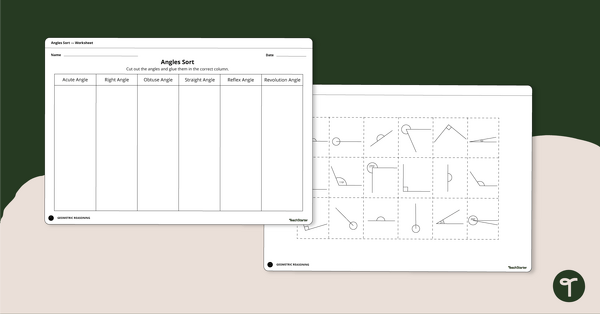


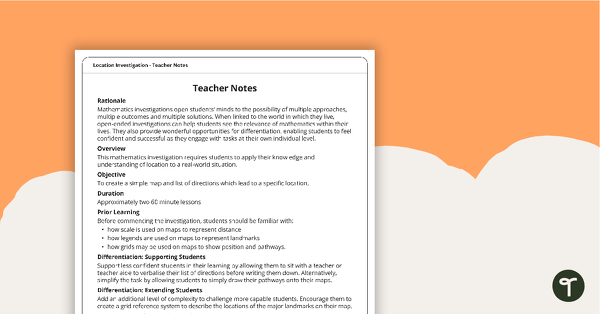
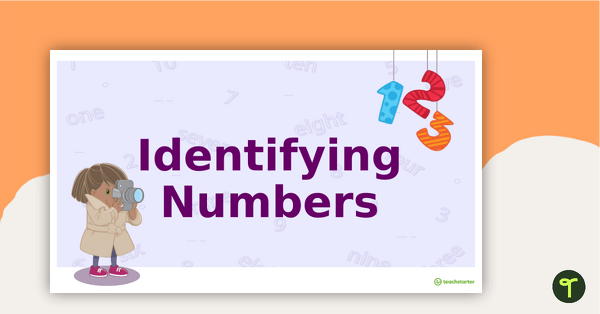

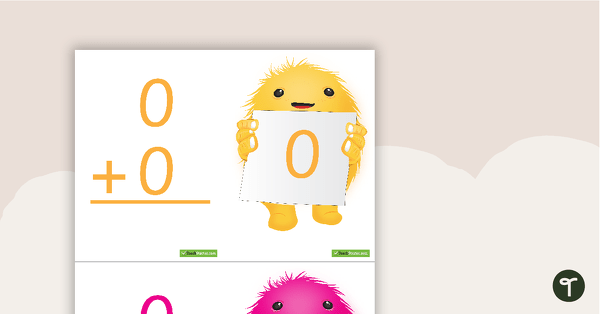
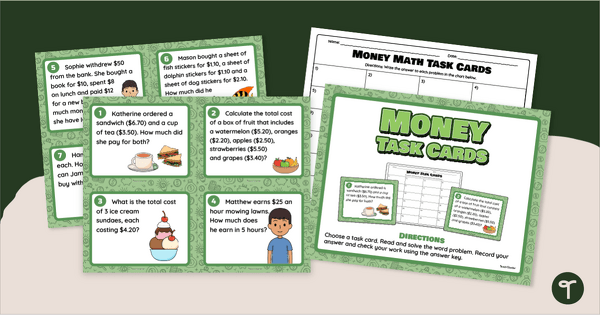
0 Comments
Write a review to help other teachers and parents like yourself. If you'd like to request a change to this resource, or report an error, select the corresponding tab above.